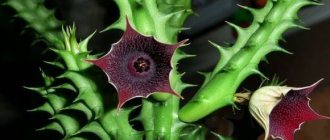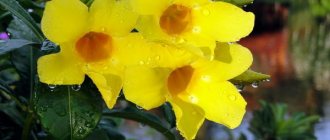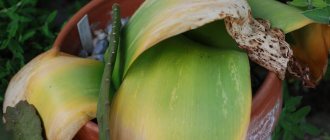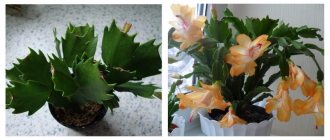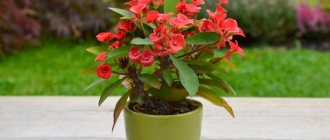- Description of the Coleus flower
- Types of indoor coleus
- Requirements for growing and caring for coleus
- Caring for coleus at home
- Lighting and placement Coleus
- Top dressing and fertilizer composition
- Transplantation, containers and substrate
- Temperature and ventilation
- Pruning and shaping coleus
- Coleus propagation
- Coleus diseases and pests
- Video: Coleus - from planting to propagation
Coleus is sometimes called the "poor man's croton" due to its similarity to croton in brightness and color range. It may even surpass croton in terms of color, but it costs much less. You can, of course, buy a ready-made plant, although coleus is very easily grown from cuttings or seeds. Compared to the capricious croton, it has one more advantage: coleus is very unpretentious. Our article will tell you about the features of growing and propagating this ornamental plant.
Description of the Coleus flower
This very popular plant from the Lamiaceae family came to us from the tropical regions of Asia and Africa. Botanists place it in the genus Coleus, and among gardeners it is known as nettle, since the leaves and shoots are very similar in shape to stinging nettle.
On a note! Colues, Latin name - Coleus, popular - "nettle". Coleus is a genus of perennial evergreen plants of the Lamiaceae family, uniting about 150 species of subshrubs and herbs.
Coleus: photo, flower description, cultivation requirements, home care.
This is a bushy plant up to 35 cm in height with quadrangular succulent, almost transparent stems and velvety leaves with rich colors and serrated edges. Most forms have nettle-like leaves. The main attraction of the plant is the leaves, which are variegated with a varied combination of red, yellow, green, brown, spots and stripes. Coleus blooms, throwing up a panicle with small, inconspicuous flowers.
Coleus flowers are small, light lilac, collected in spike-shaped inflorescences. Despite the fact that the plant is extremely easy to maintain and care for, there are some subtleties of agricultural technology; without taking them into account, it is difficult to achieve a high decorative effect.
Coleus flower.
In cultivation, varieties of hybrid coleus are common with variegated leaves from cream and lemon yellow to dark red and almost black tones, which, in addition, can vary in shape and size.
Some types and varieties
There are about 150 species of coleus in the world. These are annual or perennial plants. In addition, they differ in size. Representatives of some species are powerful and large, while other varieties are notable for their miniature size. The diversity of species complements the existence of hanging plants.
The most popular types:
- Coleus Blume. A subshrub with oval leaves pointed at the ends. Outwardly, it is very reminiscent of nettles. The leaf blades are variegated, combining several shades at once. The middle of the leaves is bright crimson. Their edges are green, jagged or with a wavy border. The nettle flower grows throughout Southeast Asia. Coleus Blume grows up to 80 cm in height. The stem and lower branches of an adult plant become lignified.
- Coleus "Black Dragon" (Coleus variety Blume). A flower with brown-violet or dark burgundy leaves, the veins of which are colored red. The edges of the leaves are wavy. This indoor plant has a very compact crown.
- Coleus Wizard. The leaves are smaller than those of the Blume variety, more rounded, and uniform in color. They are painted burgundy, crimson, yellow, light green, beige, and orange. The leaves are not always surrounded by a border. An adult plant reaches 30 cm in height.
- Coleus hybrid. The stem has a square cross-section. The leaves are located opposite and have serrated edges, they are elongated in shape, the color is variegated or monochromatic. The flower reaches a height of 30 to 80 cm. If the plant is kept on a well-lit windowsill, its leaves are dark red. A bush located in a shaded area will have green leaves.
- Coleus Renelta. Its homeland is Sri Lanka. The shoots of this hanging plant reach a length of 50 cm. The leaf plates are heart-shaped with wavy edges, pierced with multi-colored veins: red, brown, yellow, purple. The petioles of the leaves are long.
Types of indoor coleus
It is very difficult to find species of coleus or even old varieties today. They have changed over the past decades. And new selections, surprising primarily with their colors, have completely changed the idea of this plant.
Many crops that combine garden and indoor use have a clear division into types that can be used either in interiors or in landscape design. But coleus are absolutely universal: any variety is suitable for both open soil and potted culture.
Many people know (previously considered separately) the names of the species of coleus - Coleus Renalta , Bloom , hybrid. But all of them have long been reclassified and united under a single species of plectranthus - Plectranthus scutellarioides, outdated synonyms - Coleus blumeii, Coleus rehneltianus. This name must be indicated in the detailed information about the plant.
Despite the fact that all coleus have the same name, the plants are still distinguished into several groups according to their growth form:
- Ampelous coleuses are beautiful varieties with unstable, hanging, flexible shoots and fairly large leaves of a typical “nettle” shape. The base plant is easily recognized by its brownish-rusty, velvety color with a red tint, emphasized by a green border.
- Bush coleuses - the vast majority of modern varieties, low-, medium- and tall-growing coleuses, which are easily recognized by their tetrahedral, densely branched, succulent shoots and jagged edges, heart-lanceolate leaves. On their surface, zones, stripes and edges contrast with combinations of white, green, orange and red shades of the spectrum, the beauty of which is emphasized by the velvet edge of the surface.
It is always better to choose coleus according to the desired height and color, to suit your taste. The legendary variety mixtures “Wizard” and “Rainbow” became famous for their variegated, unusual two-color variations and luminous veins or watercolor color transitions.
Ampelous Coleus Wisley Tapestry.
There are also beautiful series with twisted leaves, cut in half, like “Fantasy” , and individual varieties with extravagant shades that evoke a variety of associations. Pay attention to differences in edge shape and foliage density.
Requirements for growing and caring for coleus
This tropical perennial in open ground in temperate latitudes is used only as an annual plant, but even if it is constantly kept in indoor culture, it must be rejuvenated annually.
Coleus require a lot of sunlight. With its deficiency, the leaves lose color, become smaller, and the stem becomes elongated. During the autumn-winter period, the plant loses its bright painted leaves, the stems become bare, so in the spring, when the shoots begin to grow, their tops are cut off into cuttings. They easily take root in water, after which they are planted in a light substrate and watered abundantly. The second time and in the future they begin to water only after the top layer of soil has dried.
Coleus are ideal for balcony gardening.
You should not worry if, during the entire rooting period, the leaves on the cutting remain limp and the old lower ones gradually fall off. After the cuttings planted in the ground have taken root properly, its top must be pinched so that lateral shoots begin to grow from the axillary buds. It is better to form coleus as a bush, pinching the second or third pair of leaves on newly emerging shoots.
The cuttings are planted in small pots and then transferred to larger containers as needed. After 1-1.5 months, the base stem becomes woody and this protects it from rotting if the soil becomes waterlogged. Despite the fact that coleus requires abundant watering in the summer, a “swamp” should not be allowed to form in the pot. The root ball should be slightly moist, but not too saturated with water or too dry. Even short-term overdrying often leads to the death of the plant, and once the leaves have drooped they no longer return to their original position.
Peduncles are removed when they appear or when they are no more than 1-1.5 cm long. If this is not done, the leaves, starting from the bottom, will soon begin to fall off and their color will fade.
To be highly decorative, coleus plants need to be provided with sufficient lighting.
It is best to feed coleus with fertilizers for beautifully flowering plants (in my opinion, the Dutch Pokon fertilizer has proven itself best). This will give rise to the appearance of a large number of flower stalks, after the removal of which the color of the leaves becomes brighter. The pot with the plant must be rotated 180° once a week. This will prevent the shoots from stretching towards the light.
In summer it can be planted in a garden pot or in a box on the balcony. And, of course, it is unusually good in mixed borders, and flower beds of its various varieties are magnificent against the background of the lawn.
Watering: water the coleus from spring to autumn abundantly, with soft, slightly warm water, as the top layer of the substrate dries. If tap water is hard, you should use rainwater. In winter, watering is moderate, but do not allow the clod of earth to dry out. Coleus react very sharply to the lack of moisture in the soil - the leaves become flabby. In case of cool conditions (14-16°C or lower), the plants are watered only occasionally.
Air humidity: for the normal existence of plants in room conditions it must be high; it is recommended to regularly spray coleus leaves with settled soft water at room temperature. In winter, coleus are in a state of relative dormancy and hardly grow. It is best to keep them in the kitchen, as in the warmest room with more or less high humidity.
Transplantation: Coleus is replanted in the spring after cutting the stems.
Soil: recommended soil mixture: coleus is not picky about soil; any nutrient mixture will do. In the spring-summer period (during the period of intensive growth), fertilizing with organic or mineral fertilizers, preferably potash (0.3-0.5 g per 1 liter of water) once a week, is useful. In winter, the concentration of the solution is reduced by half and fertilized once every 3-4 weeks.
Coleus flowering is not very decorative: small, inconspicuous flowers with a two-lipped corolla with a blue-violet upper and whitish lower lip are collected in complex spikes. The formation of flowers takes a lot of energy from the plant, which is why the leaves become smaller, so it is better to remove the buds.
Coleus plants can maintain the compactness of dense bushes only with constant formation.
If coleus is grown as an annual, it is not replanted. In other cases, replanting of overgrown plants is carried out once every 2-3 years. The substrate for transplantation is slightly acidic or neutral (pH 6-7). A mixture of turf, deciduous and humus soil, sand and peat in a ratio of 4:4:2:1:1 is suitable. The bottom of the pot needs good drainage.
On a note! To enhance bushiness, it is recommended to pinch the apical shoots of coleus. In February, coleus should be cut to the stump, leaving 5-8 eyes for new growth.
Growing problems
Coleus is relatively rarely affected by diseases and pests. More often you have to deal with the consequences of improper care. The main problems, their causes and treatment are given in the table.
Table - Problems when growing coleus
| Problem | Possible reasons | Remedies |
| Coleus dries up | — Lack of moisture; - temperature is too high; - root damage | — Normalize conditions of detention |
| Leaf edges turn brown | — Dry air; - lack of moisture in the soil | — Regulate the watering regime; - regularly sprayed |
| Leaves fall | — Sudden change in temperature; - draft | — Normalize temperature conditions |
| Light, yellowish spots appear | - Excess sunlight | - Shade from the sun |
| Coleus turns yellow | — Lack or excess of fertilizers; - dry soil; - keeping in open sun | — Transplanted into fresh soil; - monitor soil moisture; - shade from the sun |
| The leaves are fading | — Lack of light | - Move to a well-lit place |
| Plant growth slows down | — Lack of nutrients | — Carry out extraordinary fertilizing |
| The base of the stem rots | — Waterlogging of the soil; - poor drainage | — Watering is reduced; - transplanted into fresh soil; - improve drainage |
Since caring for coleus is not difficult, it is perfect for beginners and busy people. Different varieties can be harmoniously combined with each other, creating interesting compositions. The bushes are easily renewed, decorative foliage decorates the apartment all year round.
Caring for coleus at home
It is no coincidence that the unpretentiousness of coleus plants has become legendary. They are so popular today as an alternative to conventional annuals in gardens due to their unpretentiousness and hardiness. But, if in gardens coleus do not require containment and can grow to their full extent, in indoor culture they will still need much more careful care.
Uniform substrate moisture is the main secret in growing coleus. And the main efforts to care for this plant are aimed specifically at watering. But you cannot achieve high decorativeness from coleus even without one more point of care - shaping.
Growing coleus in the garden
Sowing seeds
The coleus plant is popular not only because it is beautiful, but also because it is easy to care for. And most importantly, the houseplant coleus can be grown in gardens with no less success. Coleus reproduces well by seed, especially since excellent English and Dutch variety mixtures can easily be found on sale today. It is best to sow coleus at the end of March. You can do this at other times of the year, but then you will have to provide additional artificial lighting for the seedlings in winter or autumn.
You will need fertile but light soil; it is best to use a flat box as a container. Coleus seeds are laid out on the surface of the soil, not in a heap, sprayed with a spray bottle, without covering them, lightly “salted” with sand, covered with glass and placed in a warm, dark place, subsequently maintaining the soil in the greenhouse in a slightly damp state.
The germination rate of purchased seeds is very high, and you can expect that every seed will germinate. This will happen faster than you expect - already on the seventh to tenth day, and as soon as the first shoots appear, remove the glass and move the greenhouse to a bright eastern or western window, protecting the sprouts from direct sunlight. The temperature should now be 17-19 ºC.
In the photo: Coleus / Coleus Honey Crisp
Growing seedlings
At the age of 3-4 weeks, when the seedlings have the first pair of true leaves, they need to be transplanted into special cassettes so that they can develop a strong root system that can not be injured when transplanted into the ground. And when the young coleus are 5-6 weeks old, transplant each into a four-hundred-gram glass and pinch to stimulate tillering.
Planting coleus
Coleus are planted in garden soil only after the final onset of warm days. Choose a brightly lit area for them, but slightly shaded at midday and protected from the wind, dig holes, add fertile water- and breathable substrate into them, and plant coleus bushes from cups in the holes. Planting coleus does not require any special knowledge or skills.
- Epiphyllum at home
If you grow it as an annual, even more so. And even if you plan to make a perennial out of it, then, firstly, you are unlikely to succeed - in two or three years you will still have to grow a new coleus from seeds or cuttings, and secondly, you will have to winter it dig it up and bring it into the house so that it can be planted in the ground again in the spring. Therefore, just plant coleus bushes at a short distance from each other and do not forget to water them after planting.
In the photo: Beautiful coleus leaves
Coleus care
Caring for coleus primarily involves abundant watering, especially in dry summer conditions. It is advisable to water with settled water, for which it is a good idea to have a barrel or tub in the garden in which tap water will settle or rainwater will accumulate. Loosen the soil after watering and remove weeds. Two or three times a summer, lightly trim your handsome man to make him bushier.
In the photo: Coleus in open ground
During the period of active growth, fertilizing should be done weekly with fertilizers with a high nitrogen content in order to stimulate leaf growth and not provoke early flowering. When flowering does occur, immediately remove the flower stalks so that they do not take away the strength of the coleus. That's all the wisdom. As you can see, growing coleus in the garden is not difficult.
Lighting and placement Coleus
The luxurious colors of coleus themselves signal that this crop is not one of the shade-tolerant ones. In order for all the shades and patterns to appear fully, coleus plants need bright lighting. At the same time, direct sunlight in summer leaves visible burns on the leaves, and diffused light always remains an ideal option for coleus.
In sunlight, the color of the coleus becomes even brighter, but it must be protected from direct sunlight. The optimal temperature in summer is 18°C, in winter - not lower than 12°C, since in cooler rooms the plant can shed its leaves. In summer, coleus is taken out into the fresh air.
When choosing a place for this plant in the interior and not on the windowsill, you should focus on the signals that the coleus itself gives. In uncomfortably low light, coleus not only changes color shades on young leaves, but also slows down its growth, begins to stretch, and its internodes lengthen. Therefore, finding the maximum possible distance from windows, taking into account these plant signals, is not so difficult.
New varieties of coleus are often advertised as shade-tolerant, but you should not experiment with placement even in partial shade until you are convinced of the normal development of the plants: coleus were and remain light-loving plants, capable of growing in a bright or sunny place.
When choosing a place for coleus, you should first of all pay attention to rooms for which frequent ventilation is natural. Coleus also grow well in living rooms, but the living room, kitchen, winter gardens, and the area at the entrance to the house are much better suited for them and will make their care much easier. But even in living rooms, coleus will feel great with proper care.
Coleus are not soloists. It is no coincidence that several copies of this plant are often planted in one pot: in groups, coleus plants are transformed. They are not afraid of the proximity of other plants. But if it is possible to combine different varieties and colors with each other and create different compositions from coleus, their extraordinary beauty will appear in all its splendor.
Coleus can be used to decorate floor flower boxes and dividers, and to introduce large containers with plant compositions into the interior.
Coleus are afraid of both dampness and drought almost equally.
In spring and summer, there may be a loss of color (burning) and turgor in the leaves, associated with exposure to excessive amounts of sunlight. For this reason, plants should be shaded from the midday sun. In addition, coleus are gradually accustomed to direct sunlight to avoid sunburn.
On a note! Coleus varieties with brightly colored (e.g., red, white, or off-white) leaves can tolerate direct sunlight better than varieties with green leaf color. Plants are suitable for growing near windows with southern, western and eastern exposure.
Flowering of coleus occurs actively and en masse, but it is not considered a decorative characteristic.
Top dressing and fertilizer composition
Despite the very bright colors of the leaves, coleus does not at all belong to plants that need frequent and generous feeding. It is better for them to fertilize at a classic frequency. Excess fertilizer does not benefit the leaves: plants grow too quickly, become deformed, and often lose color. You need to be especially careful with excess nitrogen.
On a note! The ideal frequency of fertilizing for coleus is rightly called once every 2-3 weeks.
When choosing fertilizers for coleus, it is better to choose a balanced all-purpose fertilizer or a special fertilizer for brightly leafed crops. For this crop, you can alternate mineral and organic fertilizing, but in this case it is better to increase the frequency of these procedures to 8-10 days.
Unlike many houseplants, coleus grows well with any type of long-lasting fertilizer. It is advisable to choose granules or sticks intended for decorative foliage crops. When using long-acting fertilizers, you should strictly adhere to the manufacturer's recommendations.
Transplantation, containers and substrate
Coleus are traditionally replanted annually in early spring. It is believed that it is better to renew or replace coleus annually, but if formed, they can last several seasons. If the bush does not completely master the substrate, then even with radical pruning it is better not to replant until absolutely necessary.
Coleus can be content with any high-quality substrate. They love nutritious, light and pH-neutral soil. For coleus, you can choose a ready-made commercial substrate for both universal use and for decorative foliage plants. Or you can mix the soil yourself.
The standard soil mixture for coleus is considered to be a substrate consisting of leaf, turf soil, humus, peat and sand in a ratio of 4:4:2:1:1, but any loose nutritious soil mixture that is not prone to compaction is also suitable.
Standard containers or wide bowls when planted in groups are suitable for coleus. The containers should not be too large; they should be increased by several centimeters compared to the previous pot. When transplanting, laying drainage is required. The depth of coleus remains the same.
Coleus transplant
This process occurs in the spring after pinching. The acidity of the prepared soil should be within 6-7 pH. However, it does not need to be moved repeatedly because its root system is poorly developed.
The plant is considered an annual, but if certain conditions are met, it can grow for more than one year, you just need to periodically change the soil, and if the pot becomes small, then replant it. In this case, it is necessary to carefully examine the roots for the presence of bad ones (rotten or dead), and, if possible, remove as much old soil as possible.
Temperature and ventilation
Coleus are considered one of the most adaptable houseplants and should thrive in any home or office space. Cool and moderate room temperatures are perfect for the plant. But coleus do not like heat, it is extremely difficult to compensate for it. The plant does not lose the attractiveness of its leaves only at high air humidity or in the fresh air.
Coleus in the warm season will prefer to grow at temperatures from 16 to 24 degrees. Increasing the temperature to 25 degrees requires appropriate measures if you want to maintain the impeccable appearance of the coleus.
Coleus will prefer to spend the rest period in a cool place. The optimal temperature is about 15 degrees. But it can be lowered to 12 degrees Celsius. For coleus, which grow in the soil all summer or spend the entire summer in the garden as potted plants, the wintering temperature is somewhat lower - about 10 degrees. Indicators above 18 degrees usually lead to strong elongation of shoots and loss of shape, but the plant recovers well after pruning in early spring.
On a note! Coleus can overwinter normally in a warm room.
In the summer, all coleus can be taken out into the fresh air. They feel great on balconies, terraces, and in the garden. You can use the plants as regular potted plants or transfer them to flower beds. Coleus are dug in and transplanted into open soil. At the same time, coleus thrive in the open air even in sunny areas: access to fresh air compensates for the intensity of lighting for them.
Pruning and shaping coleus
The rapid growth of coleus and the tendency of shoots to increase primarily in height require vigilant care. Coleus can maintain compactness and develop in the form of dense, dense bushes only with constant formation. It is better to start it on young plants, regularly pinching the tops, trimming the bushes to thicken them and limit their size.
Coleus tolerate even heavy pruning, but the main tools for forming this crop remain pinching and removing the tops of elongated shoots. Such regular procedures on each new shoot and branch after releasing 3–5 pairs of leaves allow you to maintain coleus in shape, controlling the height, density and size of the plants.
Removing flower stalks is mandatory for all coleus. To prevent deformation of the bushes, stretching, and loss of leaf density, it is better to break off or pinch off flower stalks before they are fully formed. The more flower stalks are allowed to develop, the more flowering affects the decorativeness of plants. If you plan to collect your own seeds, then you should not leave more than 2 inflorescences on the coleus.
To rejuvenate and renew coleus, you can use the radical pruning method. Plants are cut literally down to the stumps, stimulating complete renewal of the above-ground parts.
Coleus can be tied up and formed on supports.
Coleus pruning
The flower should be subjected to this procedure systematically. The following reasons for its implementation can be identified:
- better formation of branching, subsequently leading to the creation of a large bush (produced half a month after the dive);
- planting by cuttings (cut off older sprouts);
- reduction in growth (the top is cut off, thereby forcing it to grow in width rather than in height, giving the plant splendor);
- planned pruning (done on flowers older than a year, all shoots are cut off, leaving only 2-3 shoots);
- giving shape, decorating (cut from a formed bush).
Coleus propagation
Coleus propagate very easily. Coleus are propagated by seeds and, mainly, cuttings, in order to avoid splitting and loss of decorativeness of the leaves. To fully preserve the characteristics of the variety, it is worth choosing vegetative methods - cuttings. It can be carried out throughout the spring, during active growth, from February to June.
Indoor coleus.
For cuttings from coleus, the tips of the shoots, rather than the segments, are used. Typically, old coleus plants are rejuvenated using this method, by re-rooting the top and thus renewing the plant. Coleus shoots take root not only in the soil, but also in water or sand. For this plant there is no need to arrange a shelter under a hood or film. On average, it takes about a week for standard coleus cuttings from 8 to 10 cm long to root.
When caring for plants, watering, ventilation, a temperature of 16-18°C, a bright, possibly moderately sunny location are provided (with significant solar insolation, curling of the edges of the plate and discoloration of the leaf color are observed at high temperatures at night and low during the day). Coleus are characterized by intensive growth - within 3 months they are branched plants with large leaves. Then they are transferred into 11-centimeter pots.
Coleus propagation.
Coleus seed mixtures produce bright and colorful, unexpected results. Pure varieties of coleus are sold very rarely, but variety mixtures demonstrate excellent germination and bright surprises.
Coleus seeds are small (3500 pieces in 1 g), they are sown in February-March-April in bowls and sprinkled with sand on top. Keep at a temperature of 20-22°C. Shoots appear on the 14-18th day. Seedlings are planted in bowls or boxes at a distance of 2x2 cm. The composition of the soil is as follows: leaf - 1 part, peat - 1 part, turf - 1 part, sand - 1 part.
Sowing is carried out according to the standard scheme for garden summers - in shallow containers, universal soil, lightly sprinkling the seeds with soil. For coleus, it is better to sow several seeds per hole, but the usual scheme is also suitable.
Today, all types of coleus are united under a single species of plectranthus - Plectranthus scutellarioides.
In the phase of 1-2 pairs of leaves, coleus are planted in 7-centimeter pots, 1 copy each. The composition of the earth is the same. After a month, they are transferred into 9-11 cm pots. The main care of plants consists of watering and keeping them in a lighted place, since the intensity of the color of the leaves largely depends on the lighting (sun rays). Young plants are pinched for branching purposes. After 5-6 months, plants become important for decorating rooms.
Light soil moisture, warmth, cover with glass and a cap - all that is needed for the rapid emergence of seedlings. Coleus need to be cared for carefully; they are afraid of getting wet and require stable, light humidity. Shoots sprout after the appearance of the second pair of leaves, several plants per pot.
Reproduction
Coleus is propagated at home using cuttings and sowing seeds.
Propagation of coleus by cuttings
Propagation by cuttings is especially popular.
- In the spring, cuttings that have no flowers or buds are cut from the top of the coleus.
- The cut areas are sprinkled with charcoal powder.
- Cuttings up to 10 cm long are placed in a damp peat-sand mixture, deepening by 2.5 cm.
- Cover with a cut plastic bottle, making holes in it.
- Root at + 20°C. The cap is removed to ventilate and water.
- Usually, roots appear after 14 days. Then the cuttings are transplanted into a separate pot.
Growing coleus from seeds
Propagation by seeds is less popular, but it is possible if you buy the seeds (at home they do not have time to ripen). Use a shallow container. The seeds are sown in a damp peat-sand mixture, leaving a distance of 3–5 mm between them. Lightly sprinkle with soil and spray with a spray bottle. Cover with film, which is then removed for watering and ventilation. In 12 days, friendly shoots will appear. Seedlings dive into separate pots when 3 leaves appear on them. When the seedlings grow to 15 cm, they are transplanted into a separate pot.
When coleus is propagated by seeds, many young shoots die and the varietal properties of the plant are lost, so this method is not popular.
Coleus diseases and pests
For coleus, problems often arise due to improper wintering or improper lighting. Pulling, dropping leaves, deformation, exposing the lower part of the shoots, falling apart are typical problems. Diseases among coleus, with the exception of rot in constantly damp soil, are rare. Of the pests, the only pests that threaten the plant are whiteflies and spider mites.
If the plant is young, lack of light and untimely pinching lead to bare stems from below. This is a natural phenomenon for adult plants. When exposed to too much light, coleus foliage becomes discolored. If there is insufficient watering, especially in summer, leaves may fall off. If there is too much water, leaves may also fall off. With a lack of light, plants stretch out. Damaged by spider mites, aphids, and whiteflies.
Coleus propagate very easily from cuttings.
As you can see, growing coleus is not at all difficult, and its decorative value can delight you not only in the house, but also in the garden, because in summer this indoor plant feels great in the fresh air.

